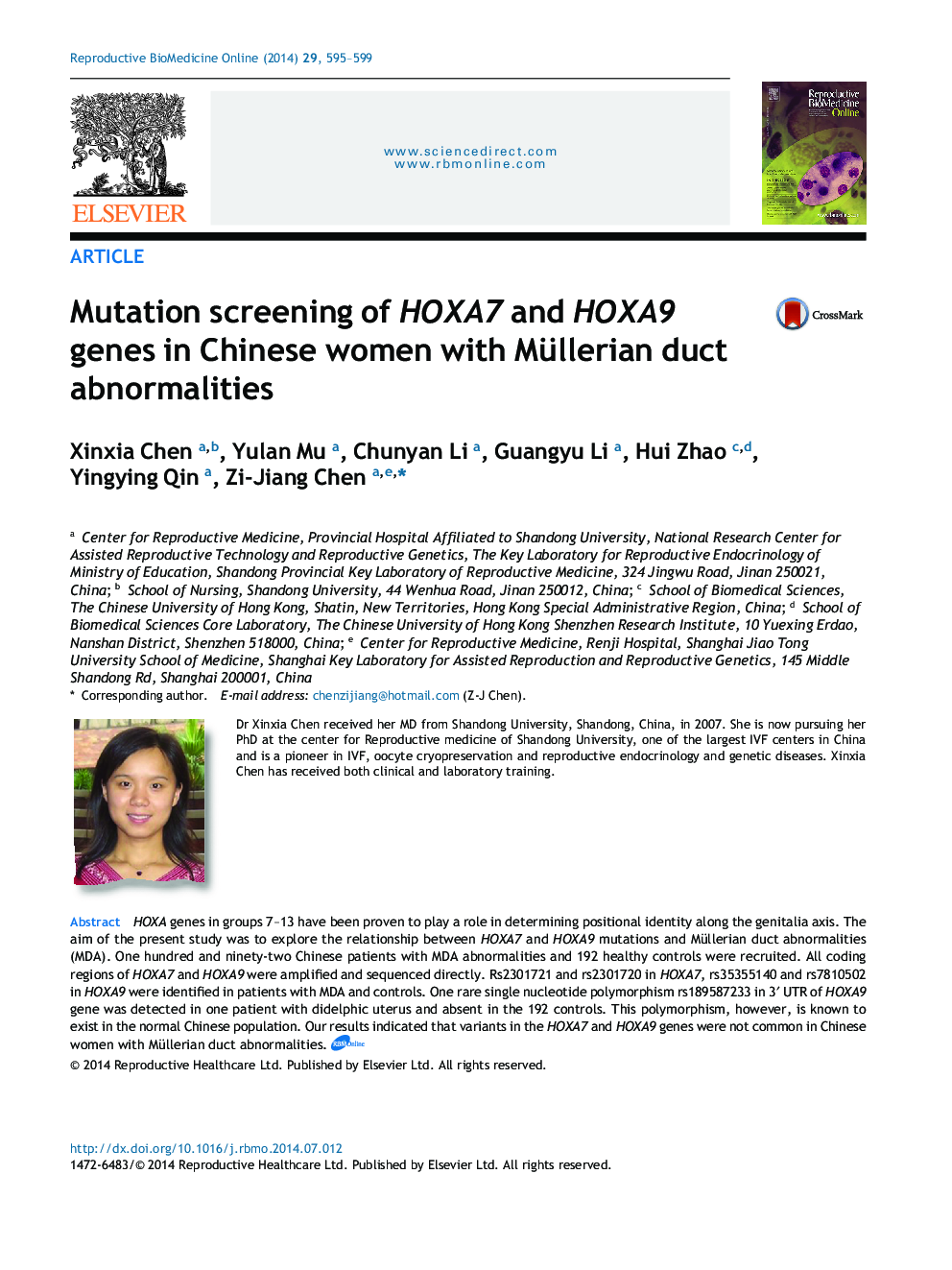| Article ID | Journal | Published Year | Pages | File Type |
|---|---|---|---|---|
| 6188999 | Reproductive BioMedicine Online | 2014 | 5 Pages |
HOXA genes in groups 7-13 have been proven to play a role in determining positional identity along the genitalia axis. The aim of the present study was to explore the relationship between HOXA7 and HOXA9 mutations and Müllerian duct abnormalities (MDA). One hundred and ninety-two Chinese patients with MDA abnormalities and 192 healthy controls were recruited. All coding regions of HOXA7 and HOXA9 were amplified and sequenced directly. Rs2301721 and rs2301720 in HOXA7, rs35355140 and rs7810502 in HOXA9 were identified in patients with MDA and controls. One rare single nucleotide polymorphism rs189587233 in 3â² UTR of HOXA9 gene was detected in one patient with didelphic uterus and absent in the 192 controls. This polymorphism, however, is known to exist in the normal Chinese population. Our results indicated that variants in the HOXA7 and HOXA9 genes were not common in Chinese women with Müllerian duct abnormalities.
